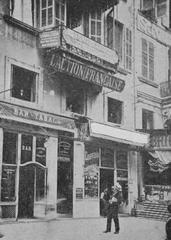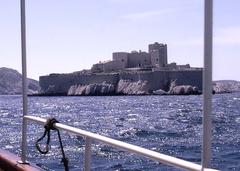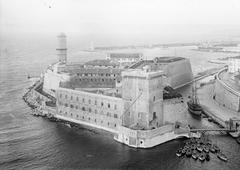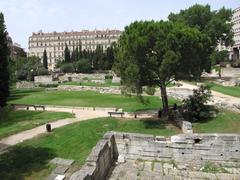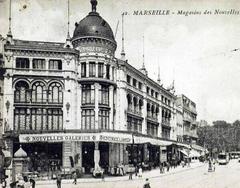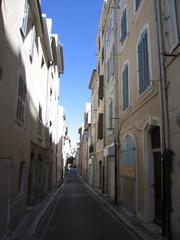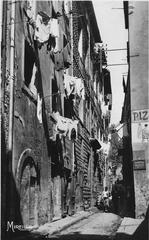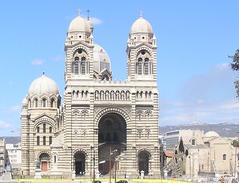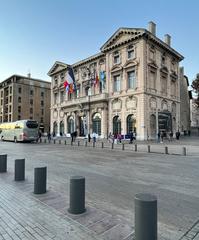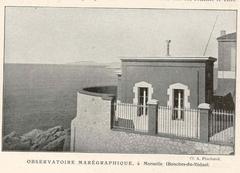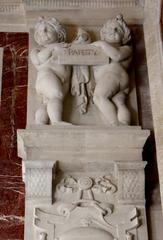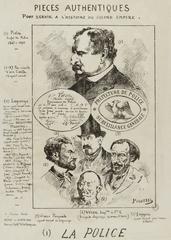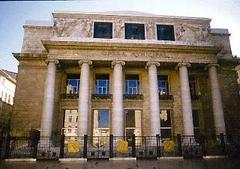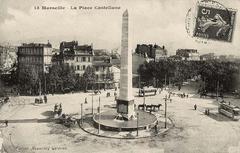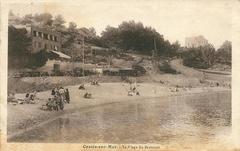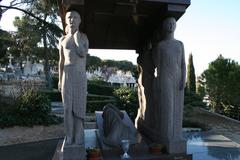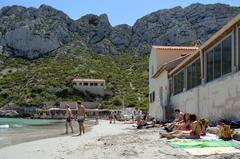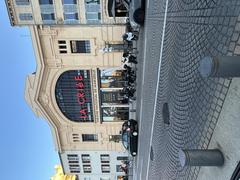Sainte-Marthe Marseille Visiting Hours, Tickets, and Historical Sites Guide
Date: 04/07/2025
Introduction to Sainte-Marthe in Marseille: History and Significance
Situated in Marseille’s dynamic 14th arrondissement, Sainte-Marthe stands out as a district where history, cultural traditions, and community vibrancy converge. Originally a small Provençal village, Sainte-Marthe is steeped in legend and spirituality, notably tied to Saint Martha, whose pilgrimage and fountain are enduring symbols in the area (marseille-tourisme.com; fr.wikipedia.org). Over time, the district evolved from agricultural roots through periods of urban integration, facilitated by the arrival of the Aix-Marseille railway, and continues to foster strong community initiatives.
Sainte-Marthe’s religious heritage is embodied by its parish church and the nearby Saint-André Church, both notable for their architectural beauty and roles as centers for local traditions and cultural events (ccocl13.fr). The area also hosts vibrant markets, urban agriculture projects, the historical birthplace of Paul Ricard, and the Sérail soap factory—one of the last producers of authentic Marseille soap. Excellent transportation links connect Sainte-Marthe with the rest of the city and its major historical attractions, such as the iconic Château d’If (marseille-tourisme.com, france3-regions.franceinfo.fr).
This guide provides essential information on visiting hours, ticketing, accessibility, travel options, and nearby attractions, ensuring a memorable and well-organized visit to Sainte-Marthe. For real-time updates and interactive planning, official tourism resources and the Audiala app are highly recommended.
Table of Contents
- Introduction
- Historical Roots of Sainte-Marthe
- Religious and Architectural Heritage
- Industrial and Cultural Landmarks
- Community Life and Social Initiatives
- Transportation and Connectivity
- Visitor Tips and Nearby Attractions
- Exploring Sainte-Marthe & Saint-André Church
- Visiting Sainte-Marthe: Hours, Tickets, and Historical Sites
- Exploring the Château d’If: Hours, Tickets, and Insights
- FAQ
- Conclusion & Summary
- References
Historical Roots of Sainte-Marthe
Sainte-Marthe originated as a Provençal village at the base of the Étoile massif. Its name and identity are closely associated with the legend of Saint Martha, who is believed to have stopped here on her pilgrimage, drinking from a now-historic fountain that remains a local landmark (marseille-tourisme.com; fr.wikipedia.org).
The area’s transformation accelerated with the opening of the Aix-Marseille railway in 1877, which led to both urban growth and a physical division of the village. Urbanization continued through the 20th century, especially with the development of social housing, yet parts of Sainte-Marthe retain a semi-rural charm (marseille-tourisme.com).
The Canal de Marseille, a 19th-century engineering feat, brought water to the area, further boosting its agricultural prosperity (provence7.com). The establishment of a military camp in 1915, with enduring features like a château and chapel, also left a lasting imprint.
Religious and Architectural Heritage
Sainte-Marthe Parish Church
The parish church stands as the spiritual heart of Sainte-Marthe, combining Provençal simplicity with historical resonance (provence7.com). Nearby, the legendary Sainte-Marthe fountain is accessible to visitors, offering a direct link to the district’s origins.
Visiting Hours and Tickets
- Sainte-Marthe Parish Church:
Monday–Saturday: 9 AM–6 PM
Sunday: 9 AM–12 PM, 5 PM–7 PM
Entry: Free - Sainte-Marthe Fountain:
Open daily during daylight hours
Entry: Free - Tour-Sainte Estate and Montgolfier Bastide:
Wednesday–Sunday: 10 AM–5 PM
Entry: €5 adults, free under 12; guided tours available by appointment
Check official resources for seasonal changes.
Industrial and Cultural Landmarks
Sainte-Marthe is the birthplace of Paul Ricard, creator of Pastis Ricard. His former residence, Château Ricard, and the Ricard company headquarters remain prominent local sites (marseille-tourisme.com). The Sérail soap factory, a bastion of traditional Marseille soap-making, offers authentic artisanal experiences.
Community Life and Social Initiatives
Lively markets fill Sainte-Marthe’s streets with Provençal flavors, while initiatives like the “Après M” project—transforming a former McDonald’s into a volunteer-run social hub—exemplify the area’s commitment to solidarity and mutual aid (culinarybackstreets.com).
Transportation and Connectivity
- Train: TER regional line (Marseille Saint-Charles–Aix-en-Provence), with a station in Sainte-Marthe’s center (fr.wikipedia.org).
- Bus: Lines 27, 28, and 31 connect to central Marseille.
- Road: D4 trunk road and A507 (L2) motorway provide easy car access.
Visitor Tips and Nearby Attractions
- Accessibility: Most sites are accessible; some historic buildings may have limitations.
- Photography: Tour-Sainte estate and parish church offer picturesque settings.
- Nearby Attractions: Combine your visit with trips to Sainte-Baume, Marseille’s Old Port, and Le Panier.
Exploring Sainte-Marthe and the Historic Saint-André Church
Saint-André Church: History, Architecture, and Visitor Information
The Saint-André Church, dating to the 19th century, showcases neo-Gothic architecture and serves as a hub for community and religious life.
- Visiting Hours: Tuesday–Sunday, 9 AM–6 PM
- Guided Tours: Weekends at 11 AM & 3 PM
- Entry: Free (donations welcome)
- Accessibility: Wheelchair-accessible entrance; assistance available
Special events, such as concerts and exhibitions, are regularly held—check official sources for the latest schedules (marseille-tourisme.com).
Sainte-Marthe Neighborhood: Markets, Urban Agriculture, and Community Spirit
- Flea Market of Marseille: Saturdays and Sundays, 7 AM–2 PM
- Sainte-Marthe Market: Wednesdays and Saturdays, mornings
- MIN des Arnavaux: Early morning wholesale market
Urban agriculture projects and the Centre Social Sainte-Marthe foster environmental awareness and community engagement (ccocl13.fr; Metropole Aix-Marseille-Provence).
Visiting Sainte-Marthe: Hours, Tickets, and Historical Sites
Key Attractions and Local Institutions
- Église Sainte-Marthe de Marseille:
Monday–Saturday: 9 AM–6 PM; free entry (mapcarta.com) - Camp de Sainte-Marthe:
Not open to public; new military hospital under construction (France 3 Régions) - Domaine de la Roserie:
Open daily, dawn–dusk; free entry
Nearby, Parc Longchamp offers museums and gardens, and is accessible by public transport (guidetourism.net).
Community Services
- Childcare: Municipal crèches, weekdays, 7:30 AM–6:30 PM, income-based fees
- Healthcare: Major military hospital opening by 2031
Exploring the Château d’If: Visiting Hours, Tickets, and Insights
History and Significance
Built in 1524, the Château d’If was initially a defensive fortress and later a notorious prison, immortalized in Alexandre Dumas’ The Count of Monte Cristo.
Visiting Hours and Tickets
- Open: Daily, 10 AM–6 PM (last admission 5:30 PM)
- Tickets: €6 adults, €4 reduced, free under 18
- Guided Tours: Audio guides and tours available; book in advance
Getting There
- Ferry: From Marseille’s Vieux-Port, every 30 minutes in peak season (20-minute crossing). Ferries are wheelchair-accessible, but the fortress has limited access for those with mobility issues.
What to See
- Explore fortress walls, prison cells, and panoramic Mediterranean views. Early visits offer the best light for photography.
Practical Tips
- Bring water and sun protection; facilities are limited.
- The island’s uneven terrain requires caution.
FAQ
Q: What are the visiting hours for Sainte-Marthe’s main sites?
A: Parish church: see above; Tour-Sainte estate: Wed–Sun, 10 AM–5 PM.
Q: Are there ticket fees?
A: Church and fountain: free; Tour-Sainte estate: €5 adults, free under 12.
Q: How to reach Sainte-Marthe from central Marseille?
A: TER train from Saint-Charles or bus lines 27, 28, 31.
Q: Are guided tours available?
A: Yes, by appointment at Tour-Sainte estate and during weekends at Saint-André Church.
Q: Is Sainte-Marthe family-friendly?
A: Yes, with parks, markets, and educational activities.
Q: Is the Château d’If accessible?
A: Ferries are accessible, but the fortress has limited wheelchair access.
Conclusion & Summary
Sainte-Marthe is a district where Marseille’s history, cultural depth, and community warmth intersect. From its spiritual origins and architectural gems to lively markets and innovative social projects, Sainte-Marthe’s atmosphere is authentically Provençal. Excellent transportation links and proximity to iconic sites like Château d’If and Notre-Dame de la Garde enhance its appeal.
For practical travel, check up-to-date visiting hours and ticket information, and consider engaging in community events and guided tours. Use digital resources such as interactive maps, virtual tours, and the Audiala app to enrich your experience. Stay tuned to official tourism sites and social media for the latest news and updates.
Plan your visit and immerse yourself in Marseille’s living heritage—Sainte-Marthe awaits with hidden gems and memorable experiences (marseille-tourisme.com, ccocl13.fr, culinarybackstreets.com).
